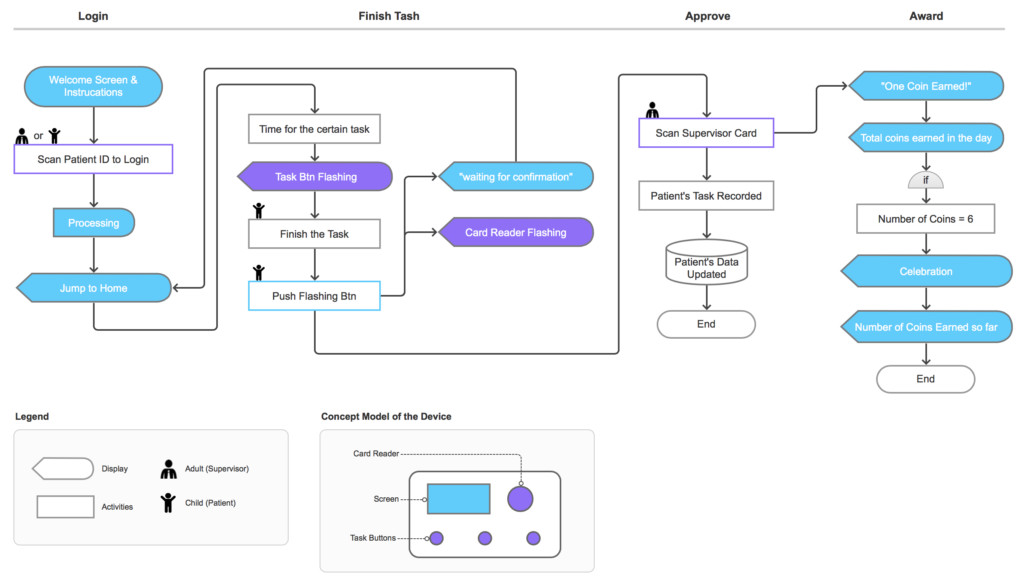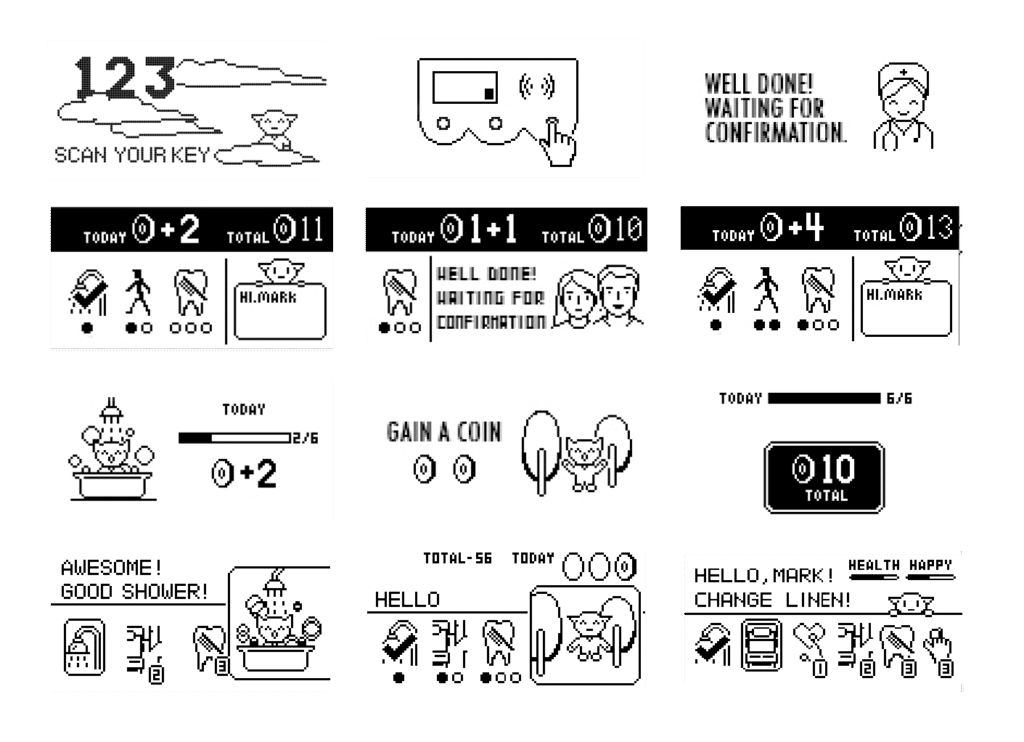
MY ROLE:
-
User Interface Design
- Wireframe
- Low- and high-Fidelity Prototype
- Interaction Design
- Visual Design
-
Industrial Design
- Sketching
- 3D Modeling and Rendering
- Physical Prototype Making
TIME:
Jan. 2016 – Dec. 2017
COLLABORATED WITH:
AWARDS:
INTRODUCTION
Meticulous hand hygiene and protective isolation is extremely important to immunocompromised patients in the hospital. To reduce the risk of infection, the cancer patients are encouraged to complete Activities of Daily Living (ADL) each day, which include:
- bathing with chlorhexidine gluconate (CHG) once per day.
- getting out of bed and being active at least twice per day.
- practicing oral care three times per day.
ADL 1-2-3 is an educational program that teaches cancer patients about the importance of ADL and encourages adherence to the protocol. Cincinnati Children’s Hospital Cancer and Blood Diseases Institute (CBDI) implemented an award-based sticker chart system to track the completion of the activities. Based on their adherence to the program, the patients are awarded a number of points, which can be used to redeem gifts or other benefits.
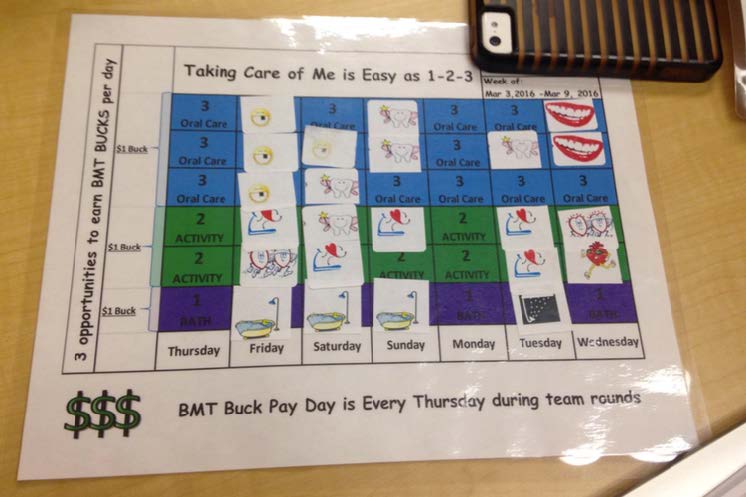
According to a research conducted in Cancer and Blood Disease Institute (CBDI) of Cincinnati Children’s Hospital, the award system successfully improved patient adherence to ADL program from 25% to 66%. However, the old solution largely increased nurses’ workload to manage the sticker charts. To reduce the burden of the old approach, CBDI worked with Livewell Collaborative (LWC) to develop an automated system that optimized the ADL 1-2-3 program. I worked as the designer in this project and assisted the team to finish the first iteration.
1. PROJECT PROCESS
This is a multi-discipline project. We followed Livewell’s Design-Driven Process Model to conduct user research and understand the design requirements and challenges. Based on the information we received during the hospital visit and interview, we developed the design concepts. I worked closely with the engineering team to design and iterate the user flow and interface, as well as the physical device. In the end, a total of 30 ADL 1-2-3 devices were built and ran at Cincinnaty Children’s Hospital Medical Center.
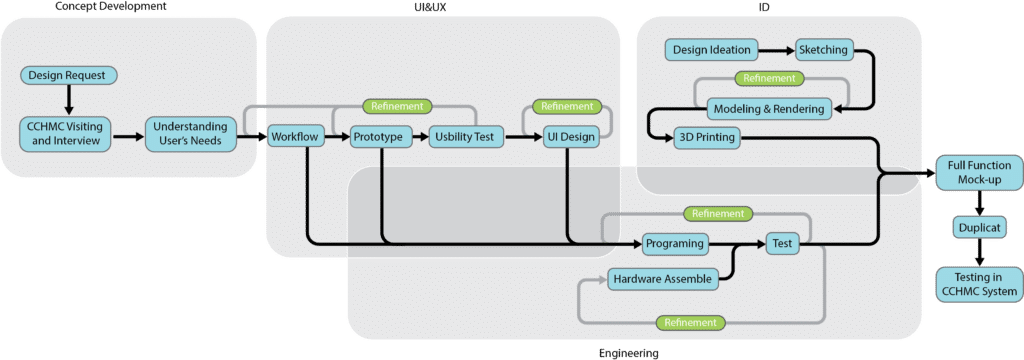
2. UI/UX DESIGN
The interface of the device includes a 128 x 64 (px) screen, an RFID reader and several light sensors (replaced by physical push buttons during later development). The interface provides with a simple and efficient interactions:
- Scan users’ card to login.
- Push one of the buttons when the patient finishes a certain task.
- Scan supervisors’ card to confirm.
When the tasks are done, the patients will achieve awards in the system, which are displayed on the screen.
Icons & Animation









UI Design

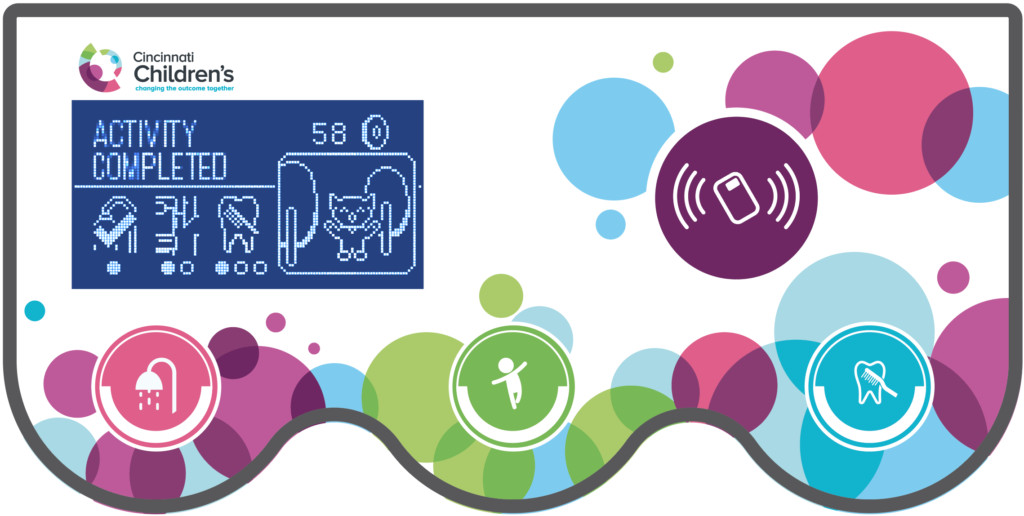
This design was highly rated by the team and the director. However, after implementing two screens, the engineers found that the elements and animations are too complex for the processor; and there was not enough time to complete the system with this design. Therefore, we decided to use a text-based interface with simpler interaction, which is more efficient. From here, I learned that a practical design should consider the implementation, not just the end user. That requires the designers to work closely with the engineering team and frequently test their concepts.
3. IMPLEMENTATION
The system was implemented on an Arduino-based device. I worked with two engineers and built six prototypes for pilot testing at the hospital. Because of the positive results, 24 additional devices were created and tested at CCHMC.
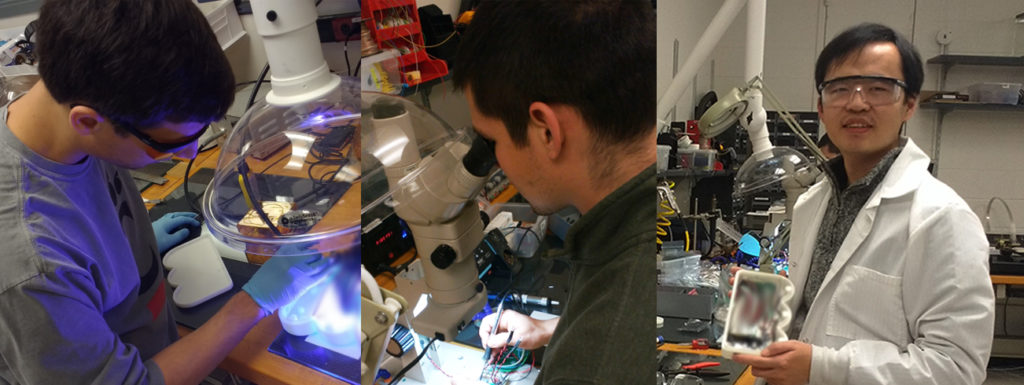
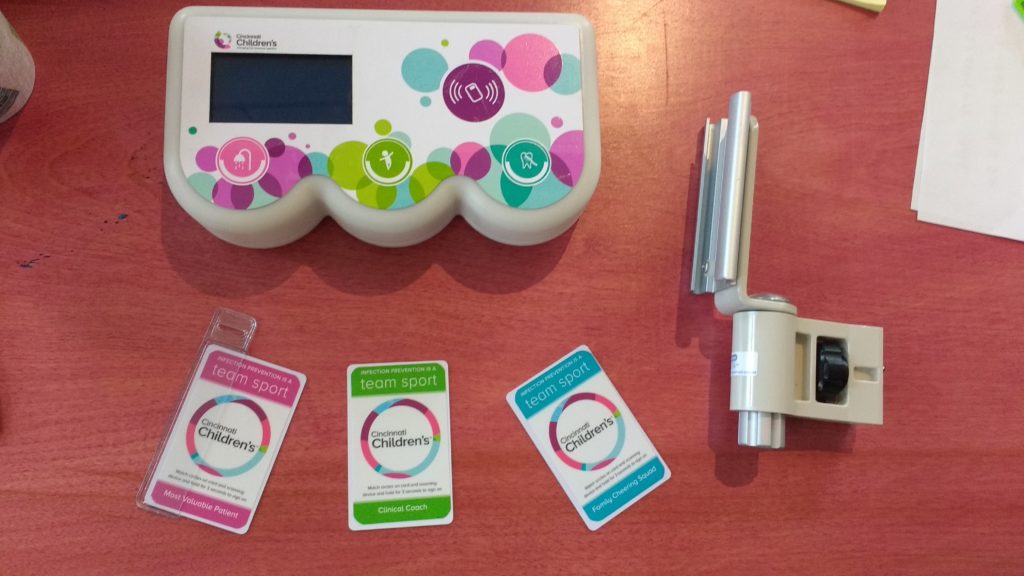
4. THE IMPACT
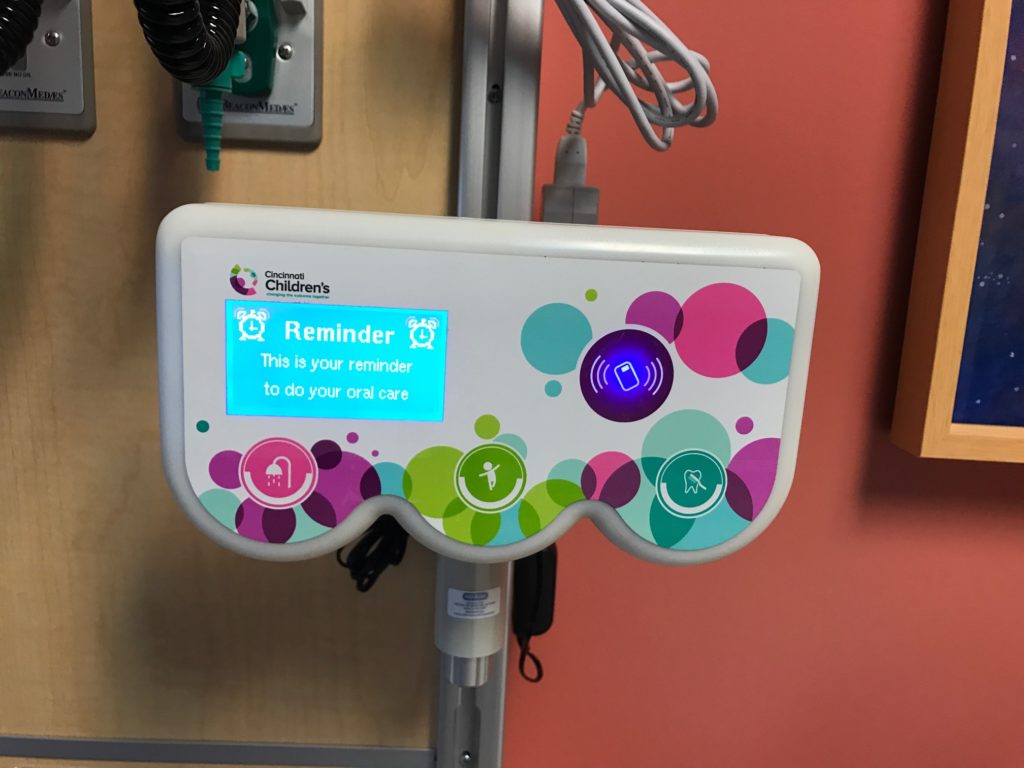
What did users say
Other Featured Projects
eFargo: Energy-Saving Game
An interactive game for public schools to help reduce carbon emissions and energy use to fight climate change.
Simple Booking
A space-scheduling system that helped students reserve a space in facilities during the pandemic.
SoDAA Alumni Maps
A map-based web application showing the school’s alumni network all around the world.


